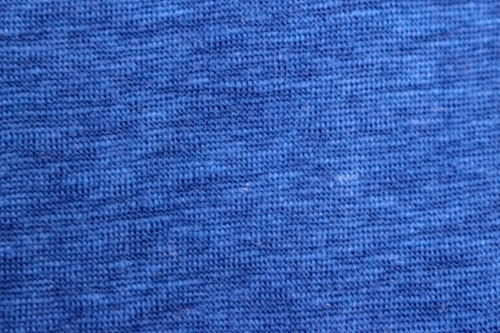0086-18057388688
Linen Knit Shirt Fabric: Properties, Production, and Performance Analysis
Linen has long been celebrated for its natural luster, durability, and cooling comfort, derived from the bast fibers of the flax plant (Linum usitatissimum). Traditionally woven into lightweight fabrics for summer apparel, linen’s transition into knitted constructions represents a remarkable fusion of heritage and innovation. The linen knit shirt fabric combines the natural virtues of linen with the elasticity, softness, and drape offered by modern knitting technologies, resulting in a textile that is both technically advanced and aesthetically versatile.
Raw Material Characteristics: Flax Fiber Fundamentals
Fiber Morphology
Flax fibers are bast fibers extracted from the stem of the flax plant. Their structure consists of:
- Ultimate fibers: Long, spindle-shaped cells (25–30 mm length, 12–16 µm diameter).
- Bundles: Multiple ultimate fibers held together by pectins, hemicellulose, and waxes.
- Crystalline Cellulose Content: Approximately 70–80%, contributing to high tensile strength.
Physical and Mechanical Properties
| Property | Typical Value |
| Density | 1.5 g/cm³ |
| Moisture Regain | 12% (at 65% RH) |
| Tenacity (Dry) | 5.5–6.5 g/den |
| Elongation at Break | 2.7–3.5% |
| Modulus | High |
| Thermal Conductivity | High (excellent cooling) |
These parameters make linen ideal for breathable summer fabrics but less elastic and more rigid compared to cotton or synthetic counterparts.
Yarn Formation for Knit Applications
Challenges in Spinning Linen for Knitting
Traditional wet-spun linen yarns are coarse and stiff, designed for weaving rather than knitting.
To make linen suitable for knitwear:
- Finer flax fibers (10–30 tex range) are selected.
- Blending is common—typically with cotton, viscose, modal, Tencel™, or polyester—to improve softness and elasticity.
- Compact spinning, open-end spinning, and ring spinning with low twist parameters are used to minimize rigidity.
Yarn Types
- 100% Linen Yarn: Crisp hand feel, low extensibility.
- Linen-Cotton Blends (70/30, 60/40): Enhanced comfort and elasticity.
- Linen-Viscose or Linen-Modal Blends: Superior drape and softness.
- Core-Spun Yarns: Elastane core with linen sheath for stretch-knit shirts.
Knitting Structures and Fabrication
Knitting Machine Selection
Linen knit shirt fabrics are commonly produced using:
- Single jersey circular knitting machines (for lightweight T-shirt fabrics).
- Double jersey/interlock machines (for stability and opacity).
- Flat knitting machines (for fashion-forward shirts and sweaters).
Knit Structures
- Plain Jersey Knit: Offers elasticity but tends to curl at edges; requires finishing stabilization.
- Piqué or Lacoste Knit: Often used for polo shirts; provides texture and structure.
- Rib Knit (1×1 or 2×2): Increases horizontal stretch and recovery.
- Jacquard Knit: For decorative effects and premium knitwear.
The stitch density, gauge, and loop length are critical in defining fabric weight (typically 120–220 g/m² for shirts) and drape.
Physical and Mechanical Properties of Linen Knit Shirt Fabric
| Property | Description |
| Dimensional Stability | Moderate; improved by enzyme washing or heat setting. |
| Elastic Recovery | Naturally low; enhanced by blending with elastane or modal. |
| Tensile Strength | Excellent (comparable to cotton knits). |
| Air Permeability | High due to both fiber porosity and knit loop structure. |
| Moisture Management | Exceptional absorption but slower drying than synthetics. |
| Pilling Resistance | Good when long-staple flax or blended yarns are used. |
| Surface Appearance | Subtle sheen, natural slubs, and a soft “dry” hand. |
Dyeing, Finishing, and Post-Processing
Pretreatment
- Desizing and Scouring: Removes waxes and pectins (critical for uniform dyeing).
- Bleaching: Hydrogen peroxide preferred for environmental compliance.
Dyeing
- Linen fibers are cellulosic, typically dyed using reactive dyes or vat dyes.
- Dye uptake is influenced by fiber crystallinity and yarn twist.
- For blended yarns, two-bath or union dyeing processes ensure shade uniformity.
Finishing Techniques
- Softening Finish: Silicone or cationic softeners improve hand feel.
- Enzyme Wash: Reduces stiffness and enhances drape.
- Heat Setting (for blends): Stabilizes dimensional properties.
- Antimicrobial and Moisture-Wicking Finishes: Applied for performance apparel.
Comfort and Aesthetic Performance
Linen knit shirt fabrics exhibit a unique thermo-physiological comfort profile:
- High breathability and moisture transport enable evaporative cooling.
- Low static charge and UV resistance contribute to wearer comfort.
- Aesthetically, the natural slub texture provides visual depth and an organic, premium look that appeals to eco-conscious consumers.
Environmental and Sustainability Aspects
Linen is one of the most sustainable natural fibers:
- Low pesticide and water requirements in flax cultivation.
- Full biodegradability and minimal microplastic pollution.
- European Flax® certification ensures traceability and responsible sourcing.
Knitting, compared to weaving, further reduces waste and energy consumption due to continuous yarn utilization and minimal cutting loss.
Applications and Market Trends
Linen knit shirt fabrics are increasingly used in:
- Casual shirts and polos
- Luxury T-shirts
- Resort wear and athleisure
- Sustainable fashion collections
The global demand is growing with consumers seeking natural, breathable, and eco-friendly alternatives to synthetic and pure cotton knits.
Technical Challenges and Innovations
| Challenge | Modern Solutions |
| Low Elasticity | Blend with elastane or use knitted rib structures |
| Fiber Breakage During Spinning | Use short-fiber flax tow or semi-wet spinning |
| Uneven Dyeing | Enzyme pre-treatment and mercerization |
| Fabric Curling | Compacting and heat setting post-knitting |
| Stiff Handle | Silicone and bio-polishing finishes |
Emerging technologies like 3D flat knitting, digital finishing, and plasma surface modification further expand design and performance capabilities.
The linen knit shirt fabric represents a sophisticated evolution of an ancient material, aligning traditional natural performance with modern textile engineering. Its technical merits—breathability, tensile strength, sustainability—combined with advancements in yarn blending, knitting, and finishing, make it an ideal fabric for contemporary apparel markets seeking both functionality and environmental responsibility.
































